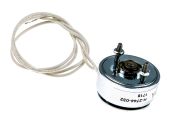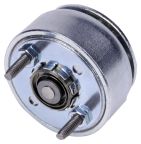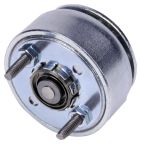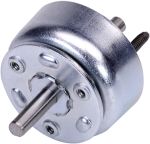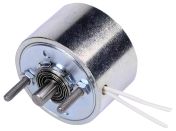Rotary Solenoids
Rotary solenoids are devices that produce a uniform magnetic field when an electrical current is applied to them. They consist of a coil of wire, wrapped around a metal core. The metal core is mounted in the centre of a disc. This has grooves on its underside to match up with slots in the body of the solenoid, and ball bearings to enable easier movement.
Rotary solenoids use the same principle as linear solenoids, but the core in linear solenoids exerts a push-and-pull force rather than a rotational force.
How do rotary solenoids work?
When an electrical current is applied, the metal core is drawn backwards into the coil. With the help of ball bearings, the disc rotates towards the positive magnetic field, giving the device rotational force. When the current is switched off, a spring on the disc swiftly rotates it back to its original position, also pulling the core out of the coil.
What are rotary solenoids used for?
Rotary solenoids were originally developed for use in defence, but are nowadays often found in industrial machinery such as lasers and shutters, as they're more robust than other types of solenoids.

